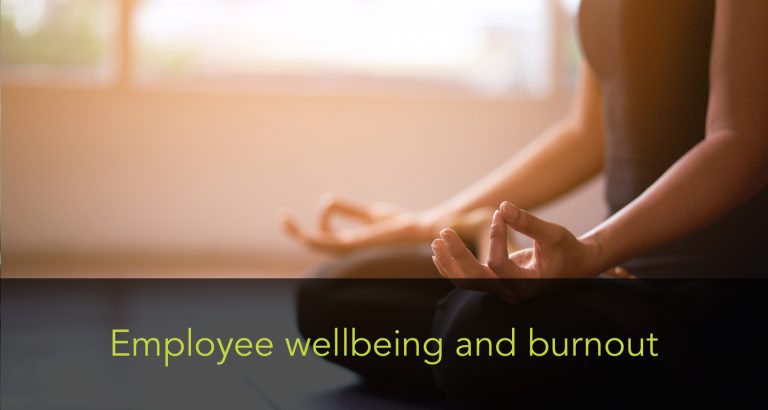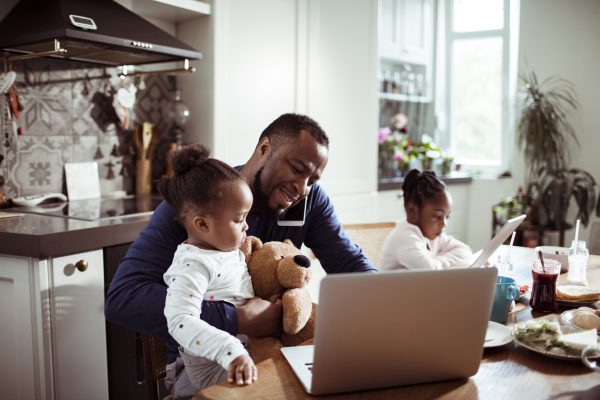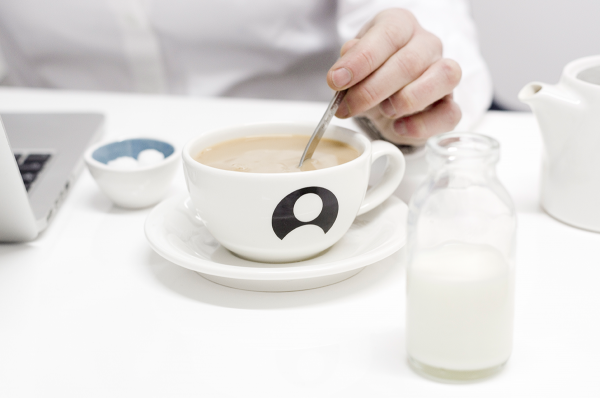Managing your employee wellbeing and burnout is a growing need within businesses. The new world of work in which more employers are operating means we need to consider how work is no longer the 9-5. And as a result, there’s a creep between home and work life as we’ve never experienced before.

Long before Covid-19 and the lockdown, we’ve been blending our working patterns to fit how we live in society. Work is no longer structured in the same way. It’s becoming increasingly flexible and adaptable to our lives, which is a good thing because how our parents and grandparents worked is no longer fit for how we need to do.
But there are some downsides to this as well. Including and impact on employee mental health.
The traditional world of work
Over the past couple of decades, and driven by changes in society and technology, we have completely disrupted the old working models. It’s becoming less common to clock in Monday to Friday, nine-to-five, report to a boss, do our jobs and then go home and forget about it.
And this is a good thing because those working practises were built for the industrial revolution when the employer had a strict structure to keep production moving at speed to meet demand.
People exchanged time for money and those who stayed at the company, showed a little initiative, were often rewarded with promotions, working their way up the career ladder.
A new world of work

However, changes in the way we live and the technology we use has upended this as the best way to get a product to market. Instead, more women are working and need to fit jobs around family and childcare. And the school day is yet to catch up.
The smartphone, wifi, and laptops have all opened up the world of working remotely. Even before lockdown, many businesses were getting online, using Zoom and Teams to conduct meetings. People could answer their emails on the move and run entire businesses from a website.
As such, what was once the model for productivity is no longer the case. And employees who work well are the ones who deliver consistently, have innovative ideas and can solve problems without needing to check with the boss all the time.
Coronavirus and the lockdown have accelerated this way of working faster than we could have ever imagined.
Employee Wellbeing
Which is great, except not all employees are coping well with the shift. As humans, we’re not too good with change. It’s what’s kept us alive for the last six million years or so.

And our ability to cope with change has been tested somewhat in this past year, which is why we see an increase in mental health issues with staff. If businesses support employee wellbeing, then they can see a reduction in the sick days reported and are more likely to retain the talent they need.
This strain on mental health is happening, in part, to the shift into working from home. We are seeing more hybrid workplaces popping up, and this means disrupting the old structures to our day.
When you’re in an office, you may not realise it, but you get lots of breaks that are good for your mental health. Trips to make tea, grab a biscuit and a defined lunch hour, all mean you interact with other people and move regularly.
In fact, 64 per cent of tea drinkers say that taking a tea break helps their mental health in the workplace. Although it doesn’t have to be the good British brew, any break from your desk in the day to get a drink will have the same positive impact.
Working from home
But when we work from home, we are not taking as many breaks. Micro-breaks like getting a drink, reduce by up to 95 per cent in the home. And this means we are not giving our brain and our body time to rest.
Add into this the fact that three in 10 employees are not taking any lunch break at all and over half of those who do feel guilty about it, you can see that employees are heading for a perfect storm for neglecting their mental health.
We are sure we don’t need to advise you that UK law requires employees to take an uninterrupted rest break of at least 20 minutes if you are working for six hours and over the age of 18.
Plus, you are required to have 11 hours break between working days. So, if your employees are working late into the night and then getting up early the next day, they are not getting enough of a break from work. Or a decent work-life balance.
Encouraging your staff to take proper breaks and not feel guilty about doing so is one of the best things you can do to make sure they feel safe and supported at work.
Employee Burn out
If your staff aren’t taking breaks and feel under pressure to be present at work for long hours (known as presenteeism), then they are on the fast track to burn out.
Burn out is the point when your employee becomes so stressed with their work that they stop being productive. It can become a dangerous cycle that they are working long hours without proper breaks to get the job done, getting stressed that they are not doing enough, and in turn not being as productive so therefore not getting as much work done.
It’s better for your employees and your business to head off burn out before it becomes a problem.
A study pre-coronavirus found that two-thirds of full-time employees were feeling burn out more than they weren’t and the average age of burnout is now 32. Not only has the pandemic increased feelings of burnout, but it has also normalised them as its legacy.
Taking action on employee wellbeing and burnout
One of the best things that a business can do over this winter is to take action on employee wellbeing and burnout. Encouraging breaks and a structure to the working day, even with a hybrid office, is a good start.
We can also offer workshops and training to support you with the changes in your organisation. Get in touch for a chat to find out more.

Recent Comments